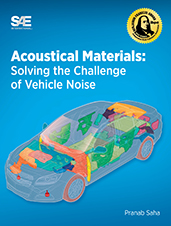Technical Paper
A Data Analysis Approach to Understand the Value of a Damping Treatment for Vehicle Interior Sound
2003-05-05
2003-01-1409
An in-vehicle study was conducted to understand how damping treatments on the floor of a vehicle affect the interior sound in the vehicle. Three differently formulated damping treatments were tested on three similar sport utility vehicles for this purpose. Numerous on-road sound and vibration data were collected under different operating conditions, and were reduced to understand the value of the damping treatment in controlling interior noise caused by powertrain and rolling-tire/road interaction. The paper discusses different data analysis procedures that were used in this study to understand whether there is a damping treatment that performs better than others in spite of variances in test vehicles, and still minimize the adverse influence of other variables that are related to the vehicle performance variation itself.

